People 47
Intro to Leon Trotsky mini-bio
 New
New
Leon Trotsky
Compiled by ARIEL DACAL DÍAZ
2015 | Rebel Lives Collection |
“The name of Leon Trotsky is among the most controversial and irreplaceable figures in the history of the revolutionary movement.” -Ariel Dacal Díaz
Leon Trotsky has not lost, after death, the ability to arouse conflicting passions. His life and work attest to the tireless fighting spirit that always encouraged him, as well as his dedication to the revolutionary cause, founded on a sentiment that would never be able to abandon him: hope in the triumph of the oppressed.
Little more than seventy years have elapsed since his assassination, and yet the thought of Trotsky and the example of tenacity that constitutes his life still have much to say.
ABOUT THE AUTHOR
Ariel Dacal Díaz
REBEL LIVES COLLECTION
Vidas Rebeldes, a new series of books at affordable prices that rediscover relevant figures in the history of the world’s workers, socialist and feminist movements. It publishes essay selections about women and men whose thought and action acquire renewed validity in our days. Vidas Rebeldes does not pretend to ennoble its protagonists as perfect political models, but to make them known in their different ways to the new generations.
168 pages | ISBN 978-1-925019-72-8
Argentine Cinema Mourns Federico Luppi
Argentine Cinema Mourns Federico Luppi
Translated and Edited by Walter Lippmann.
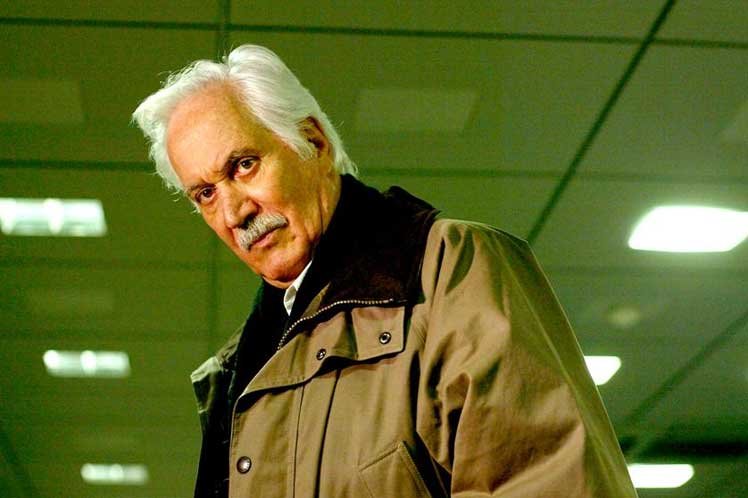
Buenos Aires, Oct 20 (Prensa Latina) He was 81 years old but for those who knew him up close, he had a young, cheerful heart and an enviable capacity for work, today the Argentineans say goodbye to one of their greatest actors, the great Federico Luppi .
Although he had been hospitalized several days ago due to a health problem that had been dragging on since his head was hit last April, the news has had an impact on the cultural media of the country and especially those Argentines who lived and dreamed of their actions.
Luppi, Time of Revenge, Labyrinth of the Faun, Common Places, Martin Hache, Cronos and many other films, died this morning at the Favaloro Foundation, where he remained hospitalized waiting for a transfer to another clinic to start a rehabilitation process.
The blow to his head produced a cerebral clot while he worked. In just six months his life went out but not the indelible mark left in Latin American and international cinema in more than 70 films, many of them multi-award winning. ‘Never’, he said sharply when one or another journalist asked him if he planned to retire one day and he kept his word, because despite his health complications, he was about to start a theatrical tour with the piece Las ultunas lunas, a play about old age, directed by his wife Susana Hornos.
On Twitter, messages weep over Luppi. He died a big figure, perhaps the most repeated word to say farewell to this actor, considered one of the most versatile interpreters of his generation.
Some pay homage with photographs and eternal thanks, others publish some of the most memorable scenes of their performances to recall it.
‘I am happy to be alive at this age, to have done so many things in Argentina and still be able to recount them. And I would like, yes, in slightly fantastical terms, to descend slowly through the dark side of the moon, but with dignity,” said this cinematic icon, who left for eternity today.
rc / may
Virgin Group Founder Visits Habana Vieja
Important British Empresario Visits Habana Vieja
By Editor, Havana Radio/ Photos: Alexis Rodríguez
October 20, 2017
Elián called for unity

Elián called for unity at World Youth Festival
By: Luis Mario Rodríguez Suñol
Translated and edited for CubaNews
by Walter Lippmann. Oct. 20, 2017.
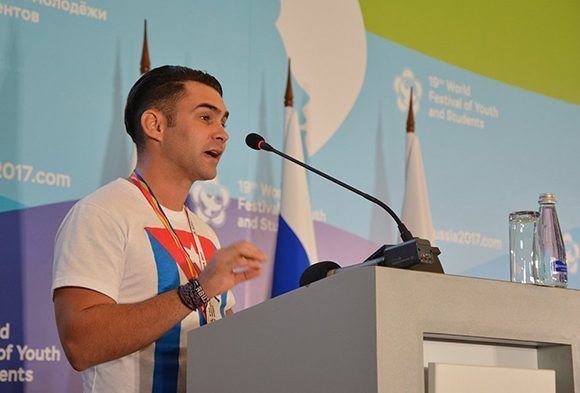
Elián González during the XIX World Festival of Youth and Students in Russia. Photo: Roberto Suárez / Cubadebate.
What can happen to the mind of a five-year-old boy who floats alone in the middle of the sea after losing his mother in a shipwreck? They say that he prayed to the Guardian Angel and that some dolphins dragged their raft towards the shore, but the opposite, away from his father and his true family in Cuba.
Little Elián González became a victim of the Cuban Adjustment Act. And at the same time, the key figure in the battle of a whole country [people] for his return. The shipwrecked child has become a 24-year-old revolutionary. He shared his story on Wednesday at the Anti-imperialist Tribunal, one of the core areas of the XIX World Festival of Youth and Students.
His history and the images of his return, in June of the year 2000, shook those present. Their voices united against imperialism. When he recalled his experiences, Elián could not contain his tears. Neither did the audience who heard his heartbreaking testimony in the first person.
Elián recalled how, as a victim of the Cuban Adjustment Act, he and his mother left Cuba illegally for the United States and the boat sank in the middle of the voyage. He maintained that the pain of losing his mother and being away from his father and his land, added to the violation of his rights and identity on American soil.
“They violated everything that is my country, my feelings, everything that was my culture,” said Elian, who said that these abuses happened with the approval of the United States government. He added: “Our crime has been sovereignty! Sovereignty was conquered, indeed, in January 1959! Our crime has been socialism! “
González pointed out other factors condemning imperialism, such as the 60 years of blockade against Cuba, the main barrier to the country’s development. He traced the history of Cuba, listing deeds that should have been prosecuted and condemned, such as the mercenary invasion at Playa Girón [Bay of Pigs], orchestrated by the Central Intelligence Agency; the illegal presence on Cuban territory of the US Naval Base at Guantanamo and the crime of Barbados where they killed 73 people [a reference to the 1976 mid-flight bombing of a Cuban passenger plane. The plane — containing all of Cuba’s young gold-medal winning fencing team as well as adults, students and children from 5 other countries — was returning to Cuba from Venezuela.It was history’s first terrorist bombing of a passenger plane, organized and carried out by a team led by Cuban counterrevolutionary expatriates Orlando Bosch and Luis Posada Carriles with the knowledge of the CIA, led at that time by George Bush.]
At the end of his speech, on behalf of the heroic Cuban people, which he said would rather disappear than go down on its knees, he asked for a condemnation of Yankee imperialism for all the human and economic damage it has caused.
Other voices from around the world spoke up at the tribunal, such as the young Saharaui Omar Hanesa, who maintained that in 1975 his country was under the dominion and occupation of Morocco, after two years of Spanish colonization. He also demanded justice for the crimes committed and demanded the release of political prisoners, sentenced to more than 20 years for organizing peaceful marches to defend the cause of his people.
Korean President Ri Cho Liu also spoke. He listed the damage caused by the US government’s economic blockade of Democratic Korea for more than 60 years in order to subdue his country.
The Tribunal became a space of unity to fight against imperialism by denouncing its crimes and proving that the young people of the world are willing to carry out the belief that a better world is possible.
Implementing Our Trade Union Policy and Recruitment
Implementing Our Trade Union Policy and Recruitment
by Jack Shepherd, Los Angeles branch, July 10, 1981
Socialist Workers Party Discussion, Vol. 37, No. 24, July 1981
==========================
Thanks to David Walters, at Holt Labor Library, for the scanned version, which has been OCRed and edited for reposting here by Walter Lippmann and Kimberly Sloss. Please let me know if you find any typos. This essay is just under 5000 words.
Walter Lippmann.
walterlx@earthlink.net
==========================
walterlx@earthlink.net
==========================
The party’s resolutions, while analyzing and portraying the political reality and the relationship of class forces at given conjunctures in time, stresses the more favorable variant in the further evolution of the class struggle. Generally this approach has been characterized as “the right to revolutionary optimism.” It is something I have always supported in our movement, and it has been my observation that those who questioned this proposition were embarking on a path that led out of the party.
Even as I had been a firm supporter of the party’s decisions to follow the radicalization in peripheral struggles such as the anti-war, civil rights, women’s and gay movements, I supported the party’s turn to industry. This support was motivated by the opinion that the economy had entered a deeper and more intractable crisis than any which had occurred since World War II. It was not based upon the concept that the workers had miraculously shed the effects of the preceding thirty years which had nurtured and sustained the generally conservative mood which shaped their thinking.
Making a turn in the party is not an easy thing. I listened to reports and assessments, which in my judgment, were overly optimistic, but were also a necessary part of carrying out the turn. Optimism has been, and always will be a legitimate part of our party and I want to affirm my support to Ito continued use. .
The party has reached the stage in our turn to the industrial workers where any fears that we are going to be left on the sidelines when they go into action should be allayed. I think the time has come when we can realistically assess the level of radicalization in the unions and build the party in the process.
We should continue the party’s present trade union policy
I am a supporter of the party’s trade union policy. I believe that the flanking tactic with respect to the trade union leadership is, soundly conceived, that the open socialist policy, within, the limits of what is possible, is correct, and that we should continue to concentrate our work in the unions around the social and political issues. It follows that I think Comrade Weinstein and his co-thinkers are mistaken.
I have always been loath to judge the application of any party policy from afar. I believe you have to have all the details and facts before a sound judgment can be made. Truth manifests itself in the concrete. The reports from Lockheed in Marietta, Georgia, and from Newport News should have clarified any misunderstandings about how our trade union policy was carried out in those situations.
It is a fact of life that any trade union policy will always result in some casualties. Sometimes it is because it is ineptly applied. In such instances, the leadership, as it has been doing, must intervene and educate against these misapplications. Sometimes the bosses take off on a tangent as is the case with Lockheed. In these situations, we are required to mount a counter-attack using every available means to win. The outcome of such a fight also shapes the application of our trade union-policy, The only tirade union policy which might not have called us to Lockheed’s attention, in my judgment, would have been to just work and do nothing.
Taking union posts has not helped other radical parties
The policy of taking union posts and concentrating on union issues is not the panacea that some comrades believe. This is basically what the other radicals have been-doing. A look at some of their 4 experiences should be instructive.
The first of these experiences involves the Communist Party (Marxist-Leninist). They were in a caucus which won some posts, including the presidency, in the Ford Motor plant in Pico Rivera, California. From the time they took, office, they were in a fight with a right-wing majority on the executive board, which enjoyed the support of the UAW Regional Director. This red-baiting fight was so intense that the majority of the members would not even take a .union leaflet when it was passed out at the plant gates.
After the plant closed, the president was put on trial for allegedly using the phone for unauthorized calls. At the trial, he said that he didn’t care what the verdict was, because he was going into the construction business. He was found guilty.
The CP (ML) has lost many of its members. It is in a political crisis over Maoism. It also has organizational problems. It is in a major internal discussion to decide whether it should continue as a party or dissolve.
The second experience involves the Communist Labor Party in the Bethlehem Steel plant in Huntington Park, California. The CLP ran candidates for union offices with mixed results. They lost the presidency to Wilfred Anderson, but they won some griever posts. Had they been more successful, they could have very easily found themselves in the same situation that prevailed at Ford because the local has a right-wing majority on its executive board.
This plant is first on a list of plants which Bethlehem is considering closing. Anderson, who is basically a good unionist, is trying to keep the plant open by cooperating with the company. He says that if he pushes grievances the way he used to, the plant will fold in 60 days.
The CLP is critical of Anderson, and will probably run against him in 1983 if the plant is still open. Basically this is a no-win situation. The CLP advocates a policy that is a little more militant, but they agree with Anderson that the plant is on the verge of being closed. Having gone through the experience of a plant closure myself, the last thing I would recommend would be to take union office to administer the procedure.
The CLP operates out of a front group called Californians Against Taft-Hartley (14b). I was trapped into attending one of its meetings because a co-worker who was riding with me wanted to go: In the past, these meetings attracted more than thirty. This particular meeting was down to eight or nine. The discussion was about what could be done to keep the committee functioning. Like other radical parties, the CLP has lost members and is now down to its hard-core cadre.
The third experience involves the Communist Workers Party. I recently had an opportunity to listen to a report on the union struggle at NASSCO by Rodney Johnson. The wages at this shipyard are about $2.00 per hour less than the rates paid by the industry on the West Coast, and the safety conditions are very poor. Military expenditures sustain the expectations of NASSCO workers that they will have contracts. The CWP and their friends ran for office and were elected. They combined militancy with democratic worker mobilizations to press for resolution of the many problems, particularly around safety, which existed. The company retaliated against one of these in-plant demonstrations that took place at lunch hour in conjunction with a ship launching, by discharging a large number of the union’s officers and shop stewards. The workers established picket lines and closed the shipyard. The strike was ended on the basis that the discharges would be given expedited arbitration. Twenty-seven cases are involved. The Ironworkers International put the local in receivership. The authorities put Boyd, Loo and Johnson on trial for allegedly conspiring to blow up the shipyard’s electrical facilities. They have been found guilty, and the verdict is being appealed. The CWP and their supporters are also petitioning to decertify the Ironworkers Union at NASSCO and replace it with an independent union.
While a final balance sheet must be delayed until the outcome of the arbitrations, the court appeal and the decertification election is known, I believe it is safe to say that we would not like to see any of our comrades in a similar situation. Johnson reported that the CWP and its friends still retain the support of a large Section of the NASSCO workers, but the obstacles to be overcome are formidable. The answer may well be that worker militancy must exist in many locals before it can be translated into victories in any of them.
Of course, all of the experiences I relate are in California. Perhaps it is different in other parts of the country. If there is some place where radicals, or for that matter even militants, are winning victories and recruiting, it would be a valid argument for adopting a more interventionist trade union policy.
Our trade union policy now and during World War II
Of all previous party, trade union policies, the present one is closest to our trade union policy during World War II. At that time we refrained from taking union posts and devoted our efforts to socialist propaganda work, Minneapolis Trial support and general union educational propaganda around the no-strike pledge, etc. We characterized this union position as “a policy of caution.” I might add that, in my judgment, this cautious policy served us well. It laid the groundwork for our extensive intervention into union leadership and the post-World War II struggles of the industrial workers.
The present union policy puts a little more stress on the open socialist approach, but I can recall selling about 40 Militant subscriptions not too long after I had completed my probationary period. Our abstention from taking positions of union leadership was based on the proposition that the wildcat strikes, which occurred in greater numbers as the war went on, could not be led to victories. The combination of the government, the companies and the union bureaucrats, plus the political support which most workers gave the war, led to assorted strikes and victimizations of the strike leaders.
Of course, John L. Lewis scored a major victory when the UMWA struck during World War II. But that was an action sanctioned by the International leadership of a major union and not a wildcat strike led by radicals or militants.
The success of the UMWA strike was powerful testimony in support of our trade union analysis. We were the only section of the labor movement that propagated the idea that the unions had to withdraw the no-strike pledge in order to resolve the accumulating problems of their members. Towards the end of the war the idea began to spread. At its last war-time convention, the UAW debated a resolution to withdraw the no-strike pledge. It lost by a handful of votes. However, it was not until the war was coming to an end and it was apparent that the working class was getting ready to go into action that were able to recruit these workers.
The economy and capital mobility has the workers on the defensive
Although it is masked to a certain extent by the inflation, the situation today is one in which the deflationary forces in the economy are coming more and more to the fore. The days when workers were fighting for reverse seniority in order to take extended vacations while they were collecting unemployment and supplementary unemployment benefits are behind us.
Since 1929, the last time these deflationary forces were unleashed, the ruling class has developed a powerful new weapon – capital mobility. During the years 1969-1976, 15 million jobs in the United States were wiped out by plant and department closures. The trend has escalated since then, and while I don’t have figures, I think it is safe to say that almost 25% of the U.S. workforce has lost jobs due to closures.
Most of these job losses were not due to business failures, but rather to capital mobility. Most of the capital migration within the U.S. has been from the Frostbelt to the Sunbelt and from unionized areas to non-union areas. But all areas of the U.S. have been affected by capital migration overseas. As a matter of fact, the rate of plant-closures in the South has been greater than in the U.S. as a whole. During the 1969-76 period, more than one third of the plants in the South, employing 100 or more workers, were closed, primarily due to capital migration overseas.
Because of their ability to freely move capital, the bosses, in many instances, have been relieved from the task of making frontal assaults on the unions to drive down wages and working conditions. To date, nobody has come up with a strategy that workers can employ on the economic front to stop these closures. At the prompt time, the choice for workers appears to be: 1) Refuse a wage cut, remain militant and go down with the flags flying like the workers did in the Gary, Indiana, American Bridge plant; or 2) Make concessions, go home and pray and probably go out with a whimper like they appear;, to be doing at the Bethlehem Steel plant in Huntington Park.
In 1950, the U.S. multinationals had $11 billion invested overseas. By 1974, it had grown to $118 billion. While I don’t have figures on what U.S. overseas investments are now,. we can rest assured that the amount has expanded since the trend to overseas investment has increased, in the last seven years.
Plant closures and the threat of plant closures are exerting enormous pressure on the unions and the workers. Ford, for- example, recently asked the UAW to open its contract before its termination date so that the company could share in the concessions that were being given to Chrysler. When its request was refused, Ford said: We are now building a world car. We can close all of our U.S. plants and still produce as many cars as we can expect to sell:
Perhaps someone may believe that you can confront problems like this one facing the Ford workers by taking a griever position and being militant on the assembly line. I don’t. The only answer I see is a long-range one. It requires the radicalization and politicalization of the workers. And this type of educational work can best be done without the burden of a griever job.
Any serious worker fightback must be political
As I have already noted, nobody has come up with any strategy, on the union level to stop these closures. Nor have they been able to use the closure of a particular plant to speed worker radicalization. This is something we should try to initiate if the opportunity presents itself, or be prepared to assist if it is initiated by someone else.
The right to invest, disinvest and move capital throughout the capitalist sector of the world is assured to the ruling class by their control over the political process. Both the Republican and Democrat parties are supporters of “free enterprise,” the economic system which makes the aforementioned rights possible. Any political party which would challenge these rights or start dismantling the structure upon which they rest would have to be anti-business, anti-free enterprise and anti-capitalist. A labor party, or any other party, would be as helpless as a baby in terms of arresting the ruling class assault on the living standards of the workers if it didn’t possess some of the foregoing ingredients. A return to a Democrat administration would be unlikely to provide the union leaders or the workers with any of the relief that they hope to obtain.
The ability of capital to move overseas was won in World War II and formalized at Bretton Woods. But it also rests on a number of subsequent government decisions such as: 1) Government insurance to compensate U.S. companies if their investments are lost through nationalizations by foreign governments; (This law may, have expired, but it existed for decades.) 2) Favorable tariff rulings; 3) IRS rulings which exonerate overseas profits from being taxed in the year they were made and taxes them in the year they are repatriated to the U.S.
Can anyone imagine any capitalist party tampering with the structure which presently facilitates overseas capital flight? Yet this is exactly what would be required if a political party was going to help Ford workers in their pending negotiations.
Domestic capital mobility also rests on a political base such as: 1) Publicly financed incentives and tax breaks to encourage investment in a particular city, county or state; 2) Low accident, disability and unemployment benefits for workers in some states; 3) Right-to-work laws which inhibit unionization.
The unions have been trying for years to solve some of the problems that encourage domestic capital migration through the Democratic Party. In a period of economic uncertainty, are the Democrats apt to pass laws which correct these inequities?
Under free enterprise, the right to invest or disinvest in a way that maximizes profits in the most sacred of all rights. Many of the plants that have been closed were profitable. But workers need jobs. Communities should have the to a decent environment rather than being converted into slums as the effects of the economic dislocated ripples through their economies.
A capitalist politician, in the name of corporate responsibility, might ask a company not to close a plant. But what if the company refuses? Is he or she going to enact legislation that says worker and community rights must be given pre-eminence over the right to maximize profits?
Most of the workers that I have talked to during the last twenty years –even those who went through the great depression– were of the opinion that it could never happen again. What is happening now is contrary to everything that they had been led to expect. Many still have hopes that things will get better. Some even, think Reagan will deliver on his promises in a reasonable period of time. We believe that the economic downturn is in its preliminary stages. If we are correct, the next period will be one in which the working class begins to dispel its misconceptions and illusions. It will begin to deepen and expand its radicalization into more meaningful and broader areas. We can do our work best as open socialists unencumbered by union posts and responsibilities, We also must be patient and confident. Time is on our side.
Where the union leadership is going now
In a recent issue of the western edition of Steelabor, the official publication of the United Steelworkers of America, the front page featured a quotation from Woody Guthrie, and its back page carried an interview with a Polish steelworker who was representing Solidarity at an AFL-CIO meeting. I have read this paper for nearly forty years. Not so long ago, If I were a betting man, I could have gotten odds of more than 100 to 1 that there never would be a Steelabor with a format that was this radical. As a matter of fact, I don’t think I would have been willing to bet a dollar on it.
Some comrades have expressed the opinion that radicalism of this type by the union leadership reflects pressure from the ranks below. I think they are mistaken.
The first time I encountered this kind of radicalism emanating from the union leadership was shortly after the enactment of the Taft-Hartley law. I believe it was in 1948.
During about a six-months period, the leadership published rearms of material showing that the U.S. was really run by a handful of the super-rich, etc. I don’t know what they did in other locals, but we were in the leadership of my local. We saw to it that it was passed out to the membership. It was just about the time that we were beginning to get a response from rank and file members that this anti-capitalist propaganda offensive stopped.
Then, as now, the union leaders were of the opinion that they were facing a major crisis. Nor was it a figment of their imaginations. If the Taft-Hartley law had been enforced with the same conservative, anti-labor vindictiveness with which it was passed, the unions would have been in a struggle to survive. Of course, we know this didn’t happen. The union leadership established a detente with the bosses, and class conciliation continued to prevail in government circles. Through the years, however, this conciliation shifted more to the side of the bosses, and it returns were more meager for labor.
Reagan’s election, the increased number of union-hating conservatives in Congress and in the state legislatures, plus the economic crisis, have again convinced the union leaders that they are in jeopardy. That is why they have mounted another radical propaganda offensive. It is a good thing. We should use it for all it’s worth and for as long as it lasts. But again, I repeat, we should not interpret this leadership radicalism as a reflection of wide-spread radicalization in the ranks of the union membership.
The union leaders are ready to make another deal
On the other hand, the union leadership is exploring the possibilities of another deal. Kirkland establishes a committee to meet with Reagan administration officials to set what can be worked out. The July 7th Wall Street Journal reports that the Steelworker leadership is opening negotiations with the steel industry to decide if the no-strike agreement will be extended to cover the 1983 negotiations. The industry wants the terms of the no-strike agreement watered down because “past settlements were too costly.” This policy of union cooperation with the steel industry was justified to the workers, after the 1959 strike, as a way to save jobs. At that time, I believe, there were more than 400,000 workers covered by the Basic Steel agreement. The WSJ says that 286,000 are covered now.
As has already been noted in this internal discussion the union leaders are seeking to solve the problems of their members by increasing their cooperation with the industrialists. We can be sure that the price the bosses are willing to pay for this cooperation will be less and less acceptable to the workers. But this is a part of the learning process which the workers have to go through before they will be ready to strike out in a new direction. It is conceivable, even likely, that this worker dissatisfaction will take some time before it manifests itself in action unless the bosses’ terms are so bad that the union leaders are forced to call a strike.
Radicalization in other social sectors will outpace industrial workers
Meanwhile, the Reagan program is devastating the many other sections of our society in the here and now. In the next immediate period, the radicalization of these affected sectors, in my judgment, will outpace the radicalization in the ranks of the industrial workers.
These other sectors don’t have the same social weight or significance of the industrial workers, but we should not underestimate the importance of their radicalization. In fact, this radicalization, if transmitted into the unions, can accelerate the radicalization of the industrial workers. And we have an almost perfect opening to start this operation.
The September 19 coalitions
As a result of their left turn, the union leaders are anxious to be seen with Black leaders, environmentalists, etc., who they formerly shunned. They want all the help they can get if Reagan and his union-hating cohorts come down on them, and they want to influence and rebuild the Democratic Party. They have set September 19 as a day of national mobilization against the Reagan program in Washington, D.C. and in major cities across the country.
In Los Angeles, the September 19th coalition is called the Greater Los Angeles-Labor Community Coalition. It is open to all union locals, AFL-CIO or independent, any community organizations, other coalitions and political parties that are opposed to all or any part of the Reagan program. As they put it: “Any group that is capable of fogging up a mirror in the morning is eligible to join and have one representative at coalition meetings.”
I have been representing the Coalition Against Plant Closures, September 19th coalition meetings are held in the Los Angeles County Federation of Labor, AFL-CIO office, and they are usually attended by about 25 people. More are involved, but sometimes they miss meetings. A representative of the New American Movement usually attends, so the coalition, is clearly open to any radical party that wants to participate.
To date, one expanded coalition meeting has been held. I suggested that we should invite a representative of the hunger-striking Vietnam veterans to this expanded meeting. While some coalition members expressed reservations, the vote was favorable, and a veteran did speak. The expanded meeting was attended by about 175.
I also serve on the coalition steering committee. At one of its meetings, a member expressed the opinion that the coalition should oppose the military budget. Another member supported the military. Since the AFL-CIO also supports the military program, it was agreed that a position against the military program would destroy the coalition. In this discussion, I made the point that the anti-draft, anti-war movement was a legitimate part of the coalition’s constituency. Everyone, including the military supporter, agreed with this position.
Of course, these September 19th coalitions may not be as open in other areas as it is in Los Angeles. If we enter these coalitions and involve our co-workers, I can’t think of any better way to get them to “think socially and act politically.” The Democrat politicians will speak at the September 19 rallies, but I can’t think of any better way to open a political discussion with our co-workers. We can contrast our labor party and socialist politics against what the Democrats have to offer. These rallies should attract the more union-minded and politically conscious industrial workers.
What the September 19th coalitions have to offer
I have already mentioned that the anti-war movement is welcome. The Nicaraguan, Salvadoran and Guatemalan movements have been asking the unions—with some success—for support. I think we should advise them to join these September 19th coalitions. They should come not seeking help, but offering their support. They may not get a speaker on the program, but if they mobilize their supporters, it would really be appreciated—and they could put anti-interventionist leaflets in the hands of everyone present.
Someone in the course of this discussion said that it was difficult to encounter Stalinists in the plants because they avoid us. If they come around these coalitions they will find them, both young and old. In fact, all of the radical parties are there. These coalitions just could be the best vehicle for a dialogue with other radicals that we have ever had during my time in the party. It is also the best time, that I can remember, to have such a discussion. The Stalinists are stuck with an indefensible position on Poland. The DSOC-NAMers are stuck with the Democrats. The Maoists are stuck with the Chinese events. I think these rallies may become poles of attraction for the newly radicalizing.
I also believe we should make a major effort to bring the student movement into September 19th. They are not only against the military buildup, but they are also against increased tuitions and decreased student loans. While on this subject, I would like to give my support to the proposition that the YSA should re-establish an on-campus presence as soon as possible. The issues are there, and, it is the only place, that I know of, where some recruitment to radical parties has been taking place during recent times.
The Reagan administration is obviously moving against the senior citizens on social security. I think we should ask our SWP seniors to make a probe with a view to bringing this, movement into September 19th. The Grey Panthers and the union-organized senior-citizens would seem to be the logical place to start.
Radicalizing industrial workers
Dining the Vietnam War most demonstrations appeared to have very little impact on the consciousness of workers in my plant. The workers knew that I was involved because I passed out leaflets. The company wouldn’t let me pass them from its parking lot which Was adjacent to the gate where the workers walked into the plant. They made me pass them from the street at the gate where the cars drove in. The union officials offered to fight for my right to use the parking lot. I turned them down because I learned from experience that I got more sympathy from my coworkers using the street gate. Even some supporters of the war thought the company was striking a low blow by not allowing me to use the parking lot. I might add that very few of my co-workers ever came to a demonstration.
The big 1969 demonstrations in Washington, D.C. and San Francisco, however, got their attention. More than once I was asked by co-workers if the San Francisco demonstration was really as large as it looked on TV. I assured them that it was even bigger. Their comment always was “I didn’t know there were that many people against the war.”
There have been many demonstrations since Reagan took office. We know that they are significant and important. But there is nothing like size to get the attention of industrial workers. September 19th may give us the opportunity to pull it all together. If we don’t accomplish it then, we will have more opportunities later, because it is supposed to be an ongoing coalition. Big demonstrations will help radicalize and politicize the industrial workers. The sooner we get them, the quicker this process will unfold in the ranks of the workers.
In conclusion, I would like to say that the foregoing represents just one comrade’s opinion about where we are now, and what we ought to do next. If it contributes in any way to helping us through this rather difficult period, it will have served its purpose.
July 10, 1981
The Posadas Return to Havana

The Posadas return to Havana
By Gabino Manguela, Published July 3, 2017.
A CubaNews translation. Edited by Walter Lippmann.
Someone once said that there were no safer businesses than funeral homes and posadas (hot-pillow motels). The reasons are obvious: death and love are simply inevitable. However, their differences are notable: in the first, you cry, in the second you enjoy.
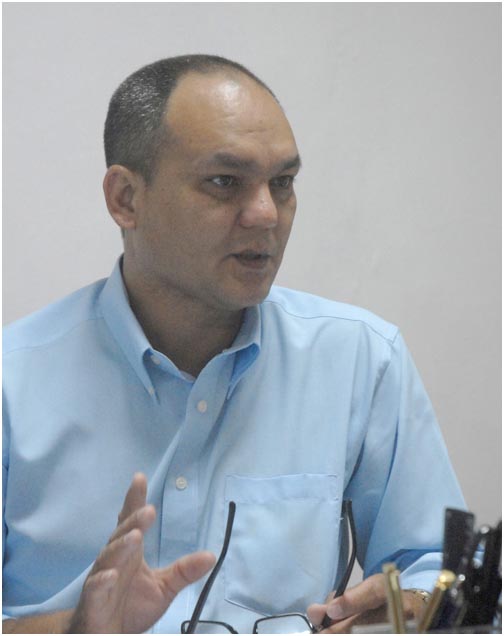
Alfonso Muñoz Chang, Director of the Provincial Lodging Company of Havana, said: “The main thing is to demonstrate that this purpose can be fulfilled.” Photos: Agustín Borrego Torres
A CubaNews translation.
Edited by Walter Lippmann.
With the exception of the very young, the most Cubans remember at least something about the posadas: be it one unforgettable kiss, or the call of the clerk indicating to the lovers that their time was up. After the first position on the island –Carabanchel– established in the late nineteenth century and located in San Miguel and Consulado, in a three-story building with 22 rooms and apartments with independent entrance from the street–dozens of such establishments flourished. The rite was always the same: the man took care of the front desk process while the woman, with her face turned down, stayed at a distance keeping her discretion.
There had been many in the capital but, according to press reports, there were 60 in 1973, and only 30 in 1989. The truth is that despite long lines and the measures of “camouflage” that some developed in order not to be caught by prying eyes, the vast majority of people –myself included– wanted to go to these places because there we made love. “Villa Cándida”, “Dos Palmas”, “11 y 24”, “La Monumental”, “Edén Arriba” and “Edén Abajo”, “La Campiña” and many others, were names repeated furtively most of the time. They were open 24 hours and everyone knew their location, details and signs, although no one talked openly about them.
The posadas not only guaranteed a happy ending to the arrangements of interpersonal relationships, but were also an option for couples faced with the realities that were becoming more acute in the country, namely the lack of housing. No one had any doubts about the convenience of having these establishments, and even tradition demanded to keep them.
But, by the 90’s of last century, in view of very evident economic shortages, it was decided to move the victims of hurricanes –persons who had lost their homes– to many (almost all) of these buildings. The remaining buildings faced the impossibility of receiving adequate maintenance, and suffered much deterioration. Little by little the posadas, or INIT motels [Instituto Nacional de Industria Turistica – today INTUR] as they were called, disappeared from the national scene.

Among the services that the Vento motel will offer is a restaurant; perhaps one of the features that will make it stand out from the rest.
The new service will begin at Vento
The Empresa Provincial de Alojamiento de La Habana [Provincial Lodging Company of Havana] is in charge of an important network of accommodations in 27 different facilities in the capital where both natural and legal persons can today rent a room for a single night. This is the entity in charge of bringing about the reopening of the service the posadas used to offer: that is: lodging by the hour, with a minimum of three hours.
Except from the people who have a private room, own a house, or can pay for a night at a hotel, the rest can only afford hourly rents, parks, dark stairs, the beach or even the Malecón (seawall).
“This is a service that is now in the hands of private persons who provide the service lost with the famous posadas. We believe in the real possibility of bringing it back and developing it,” says Alfonso Muñoz Chang, director of the company. Today the couple that goes to a private lodging must pay the owner at least 5 CUC or its equivalent in CUP [Cuban pesos] –a high figure for the average Cuban– for three hours of amourous privacy.
Generally speaking, the room has air conditioning, a fridge, running cold and hot water and adequate comfort. Of course, that does not include beer at 1.20 CUC or more, drinks or a bottle of rum at sky-high prices, appetizers or some other finger-food to make the moment more pleasant.
Comfort, hygiene and privacy are fundamental in this business, private entrepeneurs say. This will undoubtedly be a challenge for the state-owned service, both in terms of price and comfort.
“We will start with the Vento Motel, on Vento and Santa Catalina. It is a two-story building with 16 rooms with bathrooms and other technical requirements, just a few meters away from where there used to be a well-known posada or Init motel,” said Muñoz Chang.”
“We are also working,” he added, “on other ideas to expand the service. From the old posada network we were also given the famous Monumental, a unit with 20 rooms and car parking space.”
We´ve been working on the project for a while and have already submitted it; but the funding is steep and we could not include it in this year’s plan. “We believe that by 2018 we’ll be able to undertake it. There is the will of the government in the capital to prioritize that emblematic place, which is not crumbling or anything like that, but needs work,” he said.
The Provincial Company director indicated that the strategy foresees –in addition to “Vento” and “La Monumental”– the recovery with equal purposes of “Edén Arriba” and “Edén Abajo”, as well as the “Motel Ocho Vías”, a facility that meets the indispensable requirements for this service. To think about diversifying the options for love is not a crazy idea: it is a reality that affects everyone and should not turn into a luxury item available only to a few.
“We can do many things as a company, but others equally important do not depend on us –he stressed. Our aim is to recover that in-demand service, of great social impact and, undoubtedly, very profitable. “The main thing is to demonstrate that we can fulfill that purpose at the state level, and although we are sure of succeeding, we do not want to create false expectations,” he concluded.
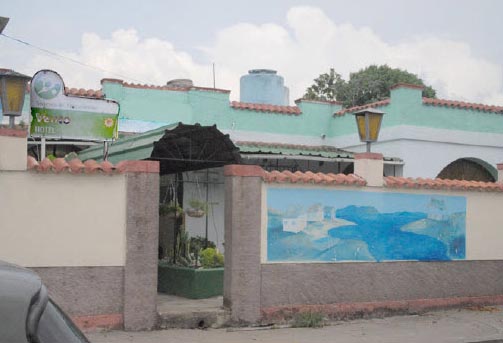
The Vento hotel has a staff of 28 workers, though that could decline after September when by-the-hour service begins. “It will be a very convenient service, plus the city needs it. Each room will have air conditioning, TV, refrigerator and phone, and we will have restaurant and food service. The workers, for their part, are very enthusiastic. After counting their results, they’re sure to increas their salaries, commented Maria Seerling, the current administrator.
[/t]
Jack Shepherd
Jack Shepherd (1919-1998)
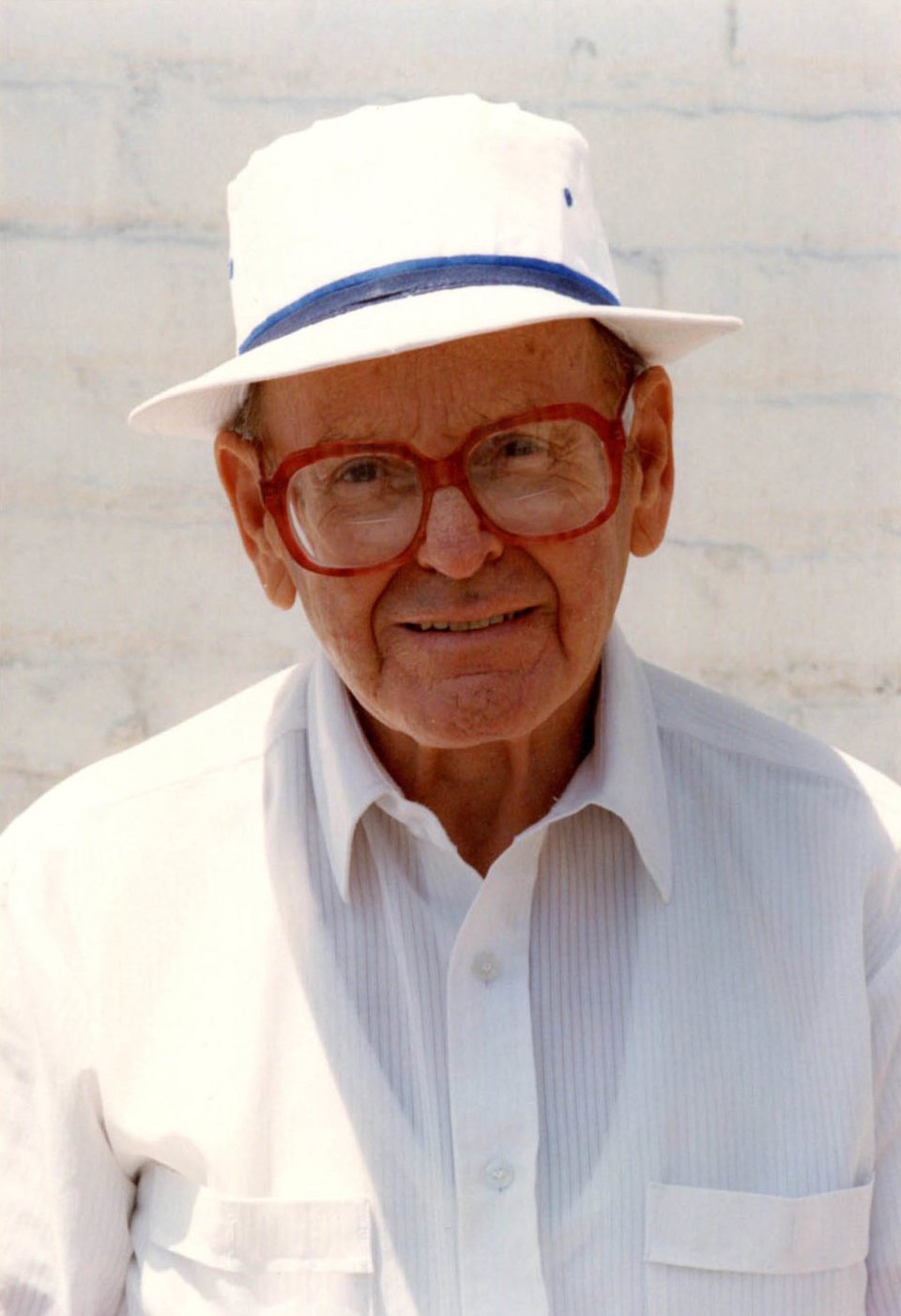
Jack Shepherd, a steelworker who headed a committee of a coalition of 25 locals in Southern California that tried to get workers involved in antiwar demonstrations last April and November, said that the attitude of the average worker was that “Nixon will bring the war to an end.”
http://www.nytimes.com/1971/12/06/archives/antiwar-groups-to-protest-here-activists-reject-new-tactic-at.html

Photos by Walter Lippmann, c. 1995.
BORN: May 5, 1918
DIED: 1998
Solidarity With Yanay

Solidarity with Yanay, discriminated against because of the color of her skin
Posted on July 7, 2017 • 11:32 by Ariadna Pérez Valdés
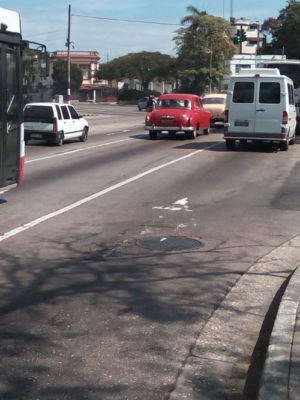
The driver of the red car –center of the photo– with license plate P158682 forced a passenger to leave the vehicle because she is black. Photo: courtesy of the sender.
A CubaNews translation. Edited by Walter Lippmann.
Since the publication, last Monday, of the article “Discriminated against on the basis of skin color”, we began receiving multiple messages from our readers through social networks, the website, section Buzón abierto [Open Mailbox], and phone calls. For the most part, these showed outrage at what happened, and supported Yanay, the Artemisa student, in her complaint.
It is worth noting that, in a few hours the item was positioned among the most read in our web edition and has remained so during the week.
The initial statements focused on astonishment and outrage at the fact that in 21st century socialist Cuba there was evidence of a scourge that many believed was eradicated: racism.
“This guy offends so many good Cubans who fought and gave their lives to sweep away these manifestations,” says Eddis Armin Pérez Calzadilla.
“We cannot allow such a serious offense: we are all equal here,” says Ana Griselda Rodríguez, neighbor of Santiago de las Vegas in the capital.
“It is an affront not only to the girl, but also to our society,” said Internet user Marco Velázquez Cristo, “because such conduct harms the dignity of the people and the values we defend. This is unacceptable.”
Then the comments got hotter, because they claimed that the action was a crime punishable under our laws, and urged Yanay to make a formal complaint. Most opinions demanded a punishment for the driver of the vehicle, on the understanding that such attitudes should not go unpunished.
“I hope the courts act strongly against the driver. For the young woman, a hug. We are not black or white, we are Cubans,” wrote Ibrahim Almaguer Legrá, via email.
Rivera warns that these racist behaviors have gone too far, not only among the boteros [self/employed car owners offering public transport service], but even in the paladares [private restaurants] with their employees. “The problem goes far beyond,” he said.
Another forum writer, Enrique Martinez, said, “Wow, now do not tell me that there is no evidence or that it is her word against his. The important thing here is to reject such an attitude. People can and must punish him. If Cubans contributed to doing away with apartheid thousands of miles away, how can a racist person be allowed to display his arrogance here. At least let’s make him swallow his racism.”
Among the many opinions, only that of a reader who calls himself Esteban does not see anything alarming in the story. “He did not ask her out for being black, but because he was ending the tour and she got offended when he called her by the color of her skin.”
We must add that a few minutes ago we received a call from the “Jose Antonio Aponte Committee” of the Union of Writers and Artists of Cuba (UNEAC) taking an interest in the facts and congratulating our team for the publication.
The senders want to know what happened to the driver and what will the authorities do. They and we “expect a STRONG response.”

Solidarity with Yanay, discriminated against because of the color of her skin
Posted on July 7, 2017 • 11:32 by Ariadna Pérez Valdés

The driver of the red car –center of the photo– with license plate P158682 forced a passenger to leave the vehicle because she is black. Photo: courtesy of the sender.
A CubaNews translation. Edited by Walter Lippmann.
Since the publication, last Monday, of the article “Discriminated against on the basis of skin color”, we began receiving multiple messages from our readers through social networks, the website, section Buzón abierto [Open Mailbox], and phone calls. For the most part, these showed outrage at what happened, and supported Yanay, the Artemisa student, in her complaint.
It is worth noting that, in a few hours the item was positioned among the most read in our web edition and has remained so during the week.
The initial statements focused on astonishment and outrage at the fact that in 21st century socialist Cuba there was evidence of a scourge that many believed was eradicated: racism.
“This guy offends so many good Cubans who fought and gave their lives to sweep away these manifestations,” says Eddis Armin Pérez Calzadilla.
“We cannot allow such a serious offense: we are all equal here,” says Ana Griselda Rodríguez, neighbor of Santiago de las Vegas in the capital.
“It is an affront not only to the girl, but also to our society,” said Internet user Marco Velázquez Cristo, “because such conduct harms the dignity of the people and the values we defend. This is unacceptable.”
Then the comments got hotter, because they claimed that the action was a crime punishable under our laws, and urged Yanay to make a formal complaint. Most opinions demanded a punishment for the driver of the vehicle, on the understanding that such attitudes should not go unpunished.
“I hope the courts act strongly against the driver. For the young woman, a hug. We are not black or white, we are Cubans,” wrote Ibrahim Almaguer Legrá, via email.
Rivera warns that these racist behaviors have gone too far, not only among the boteros [self/employed car owners offering public transport service], but even in the paladares [private restaurants] with their employees. “The problem goes far beyond,” he said.
Another forum writer, Enrique Martinez, said, “Wow, now do not tell me that there is no evidence or that it is her word against his. The important thing here is to reject such an attitude. People can and must punish him. If Cubans contributed to doing away with apartheid thousands of miles away, how can a racist person be allowed to display his arrogance here. At least let’s make him swallow his racism.”
Among the many opinions, only that of a reader who calls himself Esteban does not see anything alarming in the story. “He did not ask her out for being black, but because he was ending the tour and she got offended when he called her by the color of her skin.”
We must add that a few minutes ago we received a call from the “Jose Antonio Aponte Committee” of the Union of Writers and Artists of Cuba (UNEAC) taking an interest in the facts and congratulating our team for the publication.
The senders want to know what happened to the driver and what will the authorities do. They and we “expect a STRONG response.”
Trump: Thunders and Traps
- English
- Español
Trump: Thunders and Traps
BULLETIN 4. RESPONSES TO TRUMP’S MIAMI SPEECH AND THE MEASURES ANNOUNCED BY THE UNITED STATES GOVERNMENT
As part of the responses to the rude speech of Trump in Miami and the announced measures of the US government to intensify the blockade; Cubarte offers you other opinions, declarations and messages of solidarity.
By Ricardo Alarcón de Quesada RedDH
A CubaNews translation edited by Walter Lippmann.
Much has been said and will be said about the grotesque show that took place in Miami on June 16 and the lies and threats against Cuba there pronounced. Trump’s speech, incoherent and clumsy like all his, made at least two things clear: he will do all he can to harden US policy toward Cuba, canceling the timid steps that his predecessor had taken and the current President is an irremediable liar.
It is customary there in the North to mix politics with spectacle, information with entertainment, even if, as in this case, in terrible taste. For those who look at it from the outside, a good dose of Cartesian doubt is advisable and prudence is necessary to avoid being confused. Especially if it’s about what someone says like the quirky occupant of the White House.
Congresswoman Barbara Lee, a tireless fighter for justice and civil rights, was right to reject Trump’s speech. She stressed the importance of fighting to prevent specific regulations which would translate the presidential directive into mandatory rules that are even more damaging to peoples of the two countries. There, on that very day, there was evident proof of the correctness of her concern.
In his speech, Trump announced that he would issue a new executive order to replace the one already repealed that had guided Obama’s policy in its last two years. There in front of everyone, he added his signature to the document that appears on the official site of the White House, but which nobody read.
What he said does not correspond exactly with what he signed and the latter is what counts, because it has legal force and will guide the conduct of his administration. The contrast is evident, for example, in the case of remittances many Cubans on the island receive from their relatives residing in the United States. According to the speaker in Miami, such remittances would continue and would not be affected.
But right there, in the same act, without hiding, he signed an order that says exactly the opposite. On this issue of remittances, the document entitled “Presidential Memorandum for the Strengthening of The United States Policy towards Cuba,” which Trump signed and which was publicized by the White House and in which the fine print states that there would be millions of Cubans living on the island who would not be allowed to receive remittances.
In Section III, subsection (D), the definition of “prohibited officials of the Government of Cuba” is now extended to cover the officers and employees of the Cuban State and Government and members of the Armed Forces And the Ministry of the Interior, the cadres of the CTC and those of the local trade unions and Defense Committees of the Revolution. Professor William M. Leogrande estimates that this would be more than one
million families.
Trump boasted that he would drop all Obama’s moves and he probably intends to do so.
But he knows that this contradicts the interests and opinions of some business sectors linked to the Republican Party and that is why he hides behind aggressive rhetoric and often undecipherable jargon. With regard to the issue of Cubans and remittances had no choice but to use his favorite weapon: the lie.
We must now see how they write and apply this new order that seeks to punish the Cuban population as a whole.
From: cubarte <cubarte@cubarte.cult.cu>
To: Cubarte <cubarte@cubarte.cult.cu>
Subject: [special] Bulletin 4 of June 30
Date: Jun 30, 2017 3:20 PM
BOLETIN 4. RESPUESTAS AL TRUMP DE MIAMI Y LAS ANUNCIADAS MEDIDAS DEL GOBIERNO ESTADOUNIDENSE
Como parte de las respuestas al grosero discurso de Trump en Miami y las anunciadas medidas del gobierno estadounidense para recrudecer el bloqueo; Cubarte pone a su disposición otras opiniones, declaraciones y mensajes
de solidaridad.
———————————————————————————————————-
I. OPINIONES
TRUMP: TRUENOS Y TRAMPAS
Por Ricardo Alarcón de Quesada RedDH
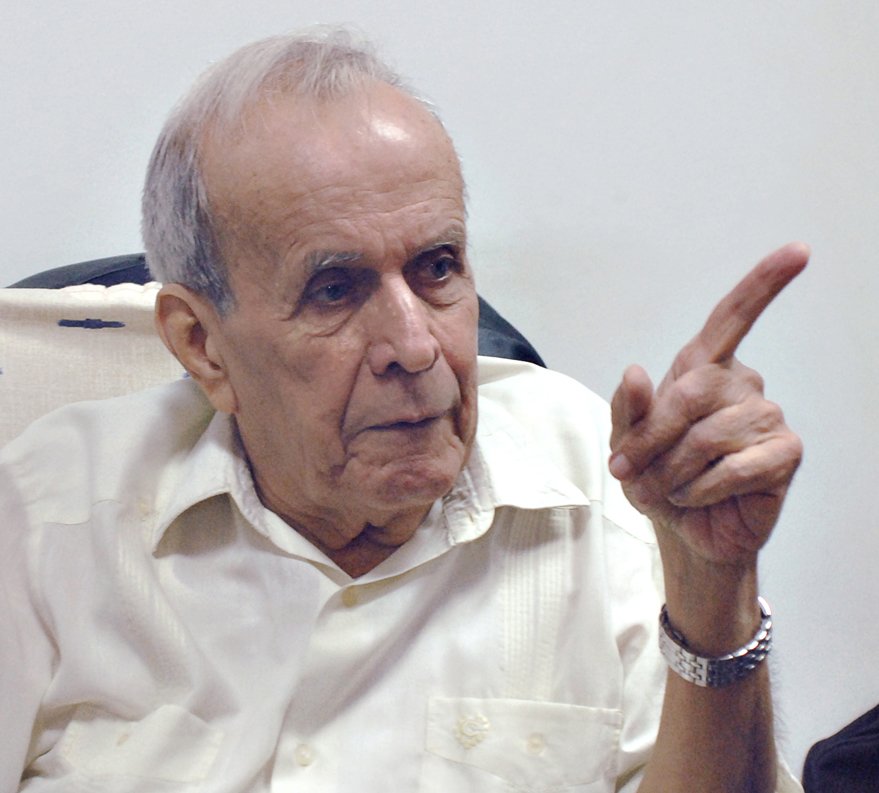
Ricardo Alarcón de Quesada
Mucho se ha dicho y se dirá sobre el grotesco show que tuvo lugar en Miami el 16 de junio y las mentiras y amenazas contra Cuba allí proferidas. El discurso de Trump, incoherente y torpe como todos los suyos, dejó en claro al menos
dos cosas: que hará todo lo que pueda para endurecer la política contra Cuba, anulando los tímidos pasos que había dado su predecesor y que el actual Presidente es un mentiroso irremediable.
Es costumbre allá en el Norte mezclar la política con el espectáculo, la información con el divertimiento, aunque sea, como en este caso, de pésimo gusto. Para quien lo observa desde fuera es recomendable una buena dosis de duda cartesiana y la prudencia necesaria para no dejarse confundir. Sobre todo si se trata de lo que diga alguien como el estrafalario ocupante de la Casa Blanca.
Con razón la congresista federal Barbara Lee, incansable luchadora por la justicia y los derechos civiles, al rechazar el discurso de Trump, subrayó la importancia de pelear por evitar que las regulaciones específicas para traducir en normas obligatorias la directiva presidencial sean aun más perjudiciales para los pueblos de los dos países. Allí mismo ese día se dio una prueba evidente de la justeza de su preocupación.
En su perorata Trump anunció que iba a emitir una nueva orden ejecutiva para reemplazar la ya derogada que había orientado la política de Obama en sus últimos dos años. Allí delante de todos, estampó su firma en el documento que
aparece en el sitio oficial de la Casa Blanca pero que nadie leyó.
Lo que dijo no corresponde exactamente con lo que suscribió y esto último es lo que vale, lo que tiene fuerza legal y guiará la conducta de su Administración. El contraste es evidente, por ejemplo, en el caso de las remesas que reciben
muchos cubanos en la isla de sus familiares residentes en Estados Unidos. Según el que habló en Miami tales remesas continuarían y no serían afectadas.
Pero allí mismo, en el mismo acto, sin esconderse, firmó una orden que dice exactamente lo contrario. A esta cuestión de las remesas dedica varios párrafos el documento titulado “Memorandum Presidencial para el Fortalecimiento de
la Política de Estados Unidos hacia Cuba”, que firmado por Trump publicó la Casa Blanca y con todas las letras establece que serían millones los cubanos residentes en la isla a quienes no se les permitiría recibir remesas.
En la Sección III, inciso (D) la definición de “funcionarios prohibidos del gobierno de Cuba” se amplía ahora para abarcar más allá de los dirigentes del Estado y el Gobierno cubanos a sus funcionarios y empleados y a los miembros y empleados de las Fuerzas Armadas y el Ministerio del Interior, a los cuadros de la CTC y a los de los sindicatos y los Comités de Defensa de la Revolución locales. El profesor William M. Leogrande calcula que se trataría de más de un
millón de familias.
Trump alardeó de que echaría abajo todas las medidas adoptadas por Obama y probablemente se propone hacerlo.
Pero sabe que ello contradice los intereses y opiniones de algunos sectores empresariales vinculados al Partido Republicano y por eso se escudó tras su retórica agresiva y su jerga a menudo indescifrable. Respecto al tema de los
cubanos y las remesas no le quedó otro remedio que emplear su arma favorita: la mentira.
Habrá que ver ahora como redactan y aplican esta nueva orden que pretende castigar al conjunto de la población cubana.
From: cubarte <cubarte@cubarte.cult.cu>
To: Cubarte <cubarte@cubarte.cult.cu>
Subject: [especial] Boletín 4 del 30 de Junio
Date: Jun 30, 2017 3:20 PM
Mariana Hernandez, THE RAG interview, 1971
THE RAG INTERVIEWS MARIANA HERNANDEZ
February 22, 1971
MARIANA HERNANDEZ, interviewed by THE RAG, Austin, Texas,
Mariana Hernandez is the Socialist Party’s candidate for Travis LaRue’s job- mayor of Austin.
By printing this interview, The Rag does not mean to take sides in the upcoming election. But we would like to point out that almost any change would be an improvement.
The interview was taped on the spur of the moment at the Abortion Conference, where the Socialist candidates were promising to work for free abortions on demand if elected. The candidate’s willingness to speak into a somewhat hostile reporter’s tape recorder without advance notice was remarkable in the context of Texas politics.
RAGT: How do you propose to change the abortion laws from the City Council?
MH: Well, what we intend to do first of all is help build the Women’s Liberation movement. We will involve ourselves in all the building aspects of it and in that way involve a larger number of people. What we will do at the City| Council is also have it at a time when more women are able to come to meetings and express their views as to what the City Council ought to be| doing. That is, we won’t have them at 9 o’clock in the morning when most people can’t come. There are working women who can’t present their views because they’re working… RAG: Wouldn’t you say that most men can’t participate at that time either, so it’s a bit unfair to all citizens?
MH: That’s true. So we would have it at a time when all citizens could participate.
RAG: How do you see. your chances for winning?
MH: Well, what we see is that if we get the publicity, if we get out and are able to take our demands to the people, they’re going to support us. That’s our chances.
Many women support free abortion on demand, which is one of our positions. Large numbers of people support our anti-war position. But there are areas of the city that just have not had the opportunity to hear us.
RAG: How has the response to you been from the straight media?
MH: All of the press except for the Daily Texan were at our press conference. Even the Dallas Morning News was there! And, in fact, they didn’t seem to be that hostile just amazed that Socialists would run. Their major question was: “Is it serious?” The way this was answered over and over again by all the candidates was yes, we are serious, we are the only group of people running today who are serious, who are even talking about the major issues that affect people. The others are avoiding them.
RAG: Speaking of talking about the major issues, would you consider a debate with the incumbents?
MH: Yes, I would. Of course. I would certainly like to debate the mayor, Travis LaRue. We’d discuss things like pollution around laundries. We’d discuss his position on Women’s Liberation, although there’s supposed to be a Mayor’s Commission on Women. We would debate the question of the right of a citizen to march down the street and assemble.
We would discuss many issues. Like, for instance, the fact that he gives the key to the city to all sorts of people people who sell Budweiser on TV, and things like that but he would never consider the idea of inviting representatives from East Austin, say, to be mayor for a day. Not only mayor for a day, but just come in
RAG: Do you agree with what seems to be a wide-spread sentiment in East Austin that the apathy of City Government has emasculated the Human Rights Commission?
MH: I would agree with that. The reason that it was actually started in the first place was, basically, to make people believe that the City Council was going to do something.
A real, concrete example of what they haven’t done that they could have done is in the recent demands being made by the Booker T. Washington Project people. They are saying that there has been brutality, that the police come in as outsiders, they push us. around, they have guns on us, and we don’t appreciate this. The people were trying to get something done about the situation.
Of course, there have been promises of investigations. It doesn’t take more than 30 minutes to go out there and investigate that situation.
If the police—“the protectors and defenders of the people of East Austin”—were from East Austin, if they were under the control of the East Austin residents so that the East Austin residents could remove them, then we wouldn’t have police brutality, because the police would be defending the people’s rights in Austin. You wouldn’t see policemen protecting the privileges of certain people out here who go into East Austin.
RAG: Do you believe that even if you lose, your candidacy may push whoever does win towards solving these problems?
MH: Yes, there will be pressure put on them. It’s pretty much like what happened in Colorado, when La Kaza Unida candidates ran. Although there had never been any chicanos elected even within the Democratic Party, this began to happen. All of a sudden, they were pressured into getting chicanos to run, they were pressured into beginning to talk about the lettuce strike publicly, they were pressured into talking about the Coor’s beer boycott.
* In this way, we will pressure them to talk and make their stand known to the people. And this is where the media has to come in and support us. That’s our basic fight at this point letting people know what we stand for.
Subscribe to Blog via Email
| M | T | W | T | F | S | S |
|---|---|---|---|---|---|---|
| 1 | 2 | 3 | 4 | 5 | 6 | 7 |
| 8 | 9 | 10 | 11 | 12 | 13 | 14 |
| 15 | 16 | 17 | 18 | 19 | 20 | 21 |
| 22 | 23 | 24 | 25 | 26 | 27 | 28 |
| 29 | 30 | 31 | ||||

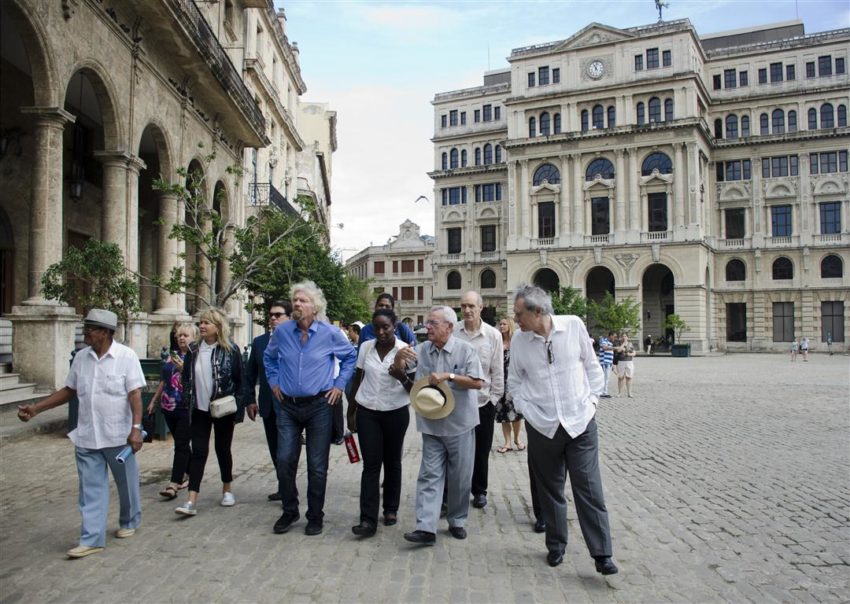
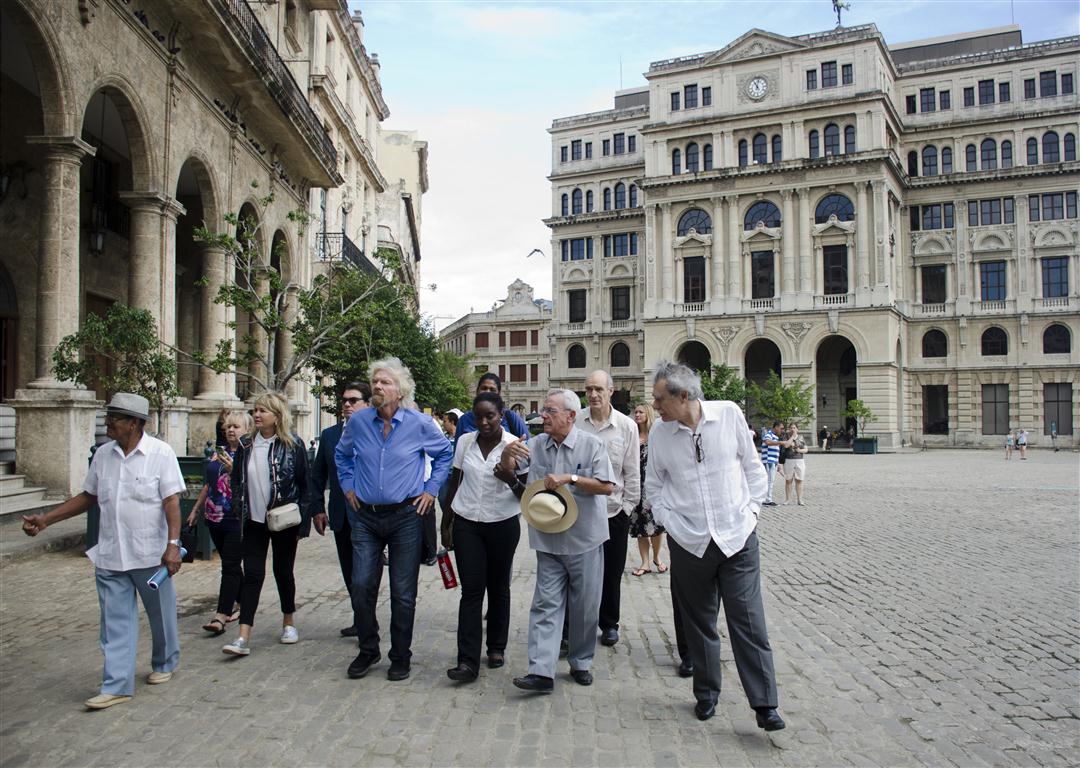
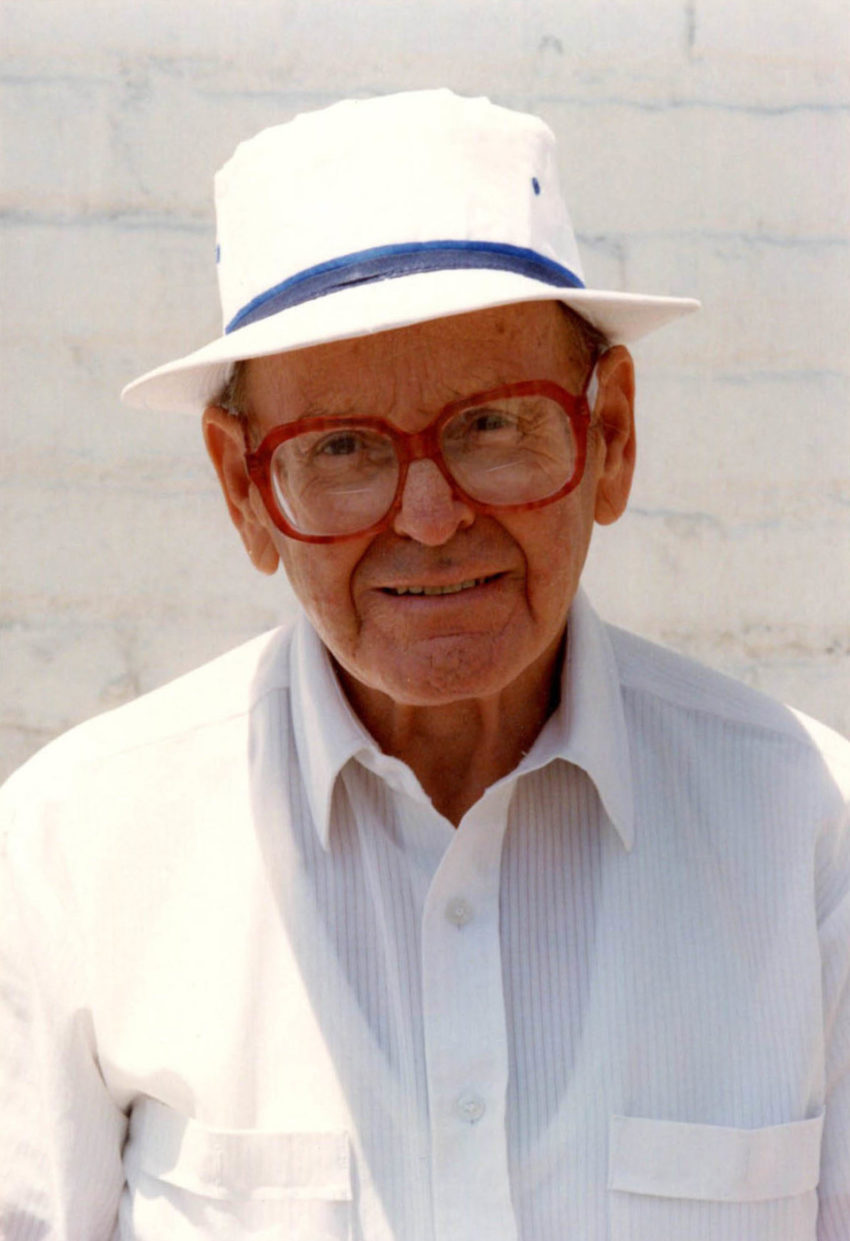
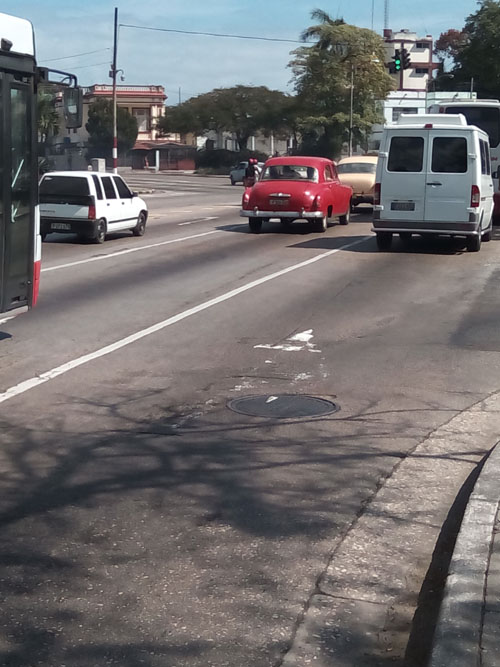
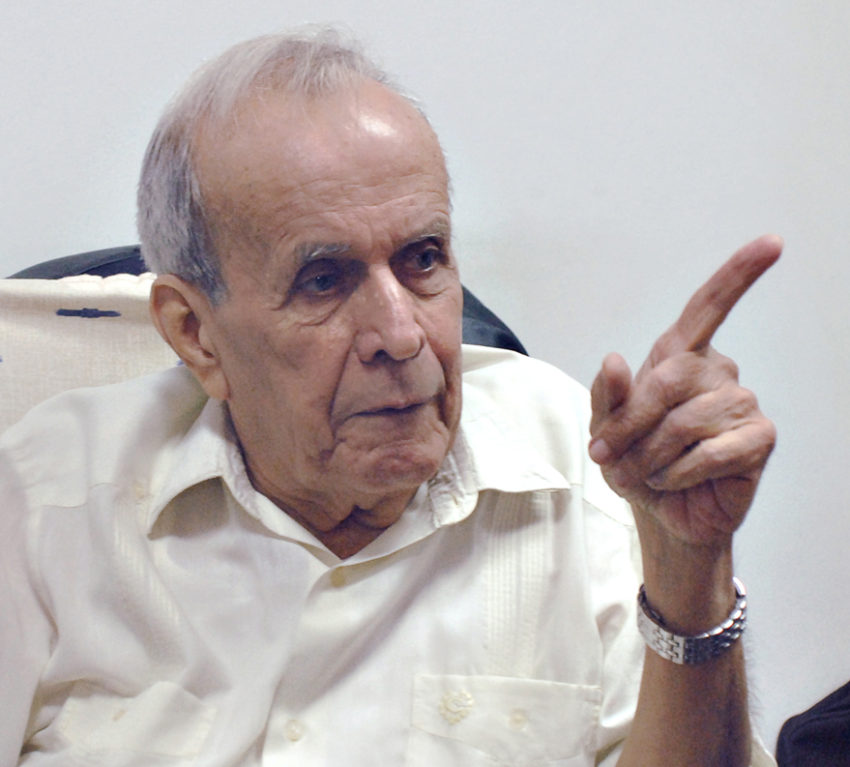
You must be logged in to post a comment.